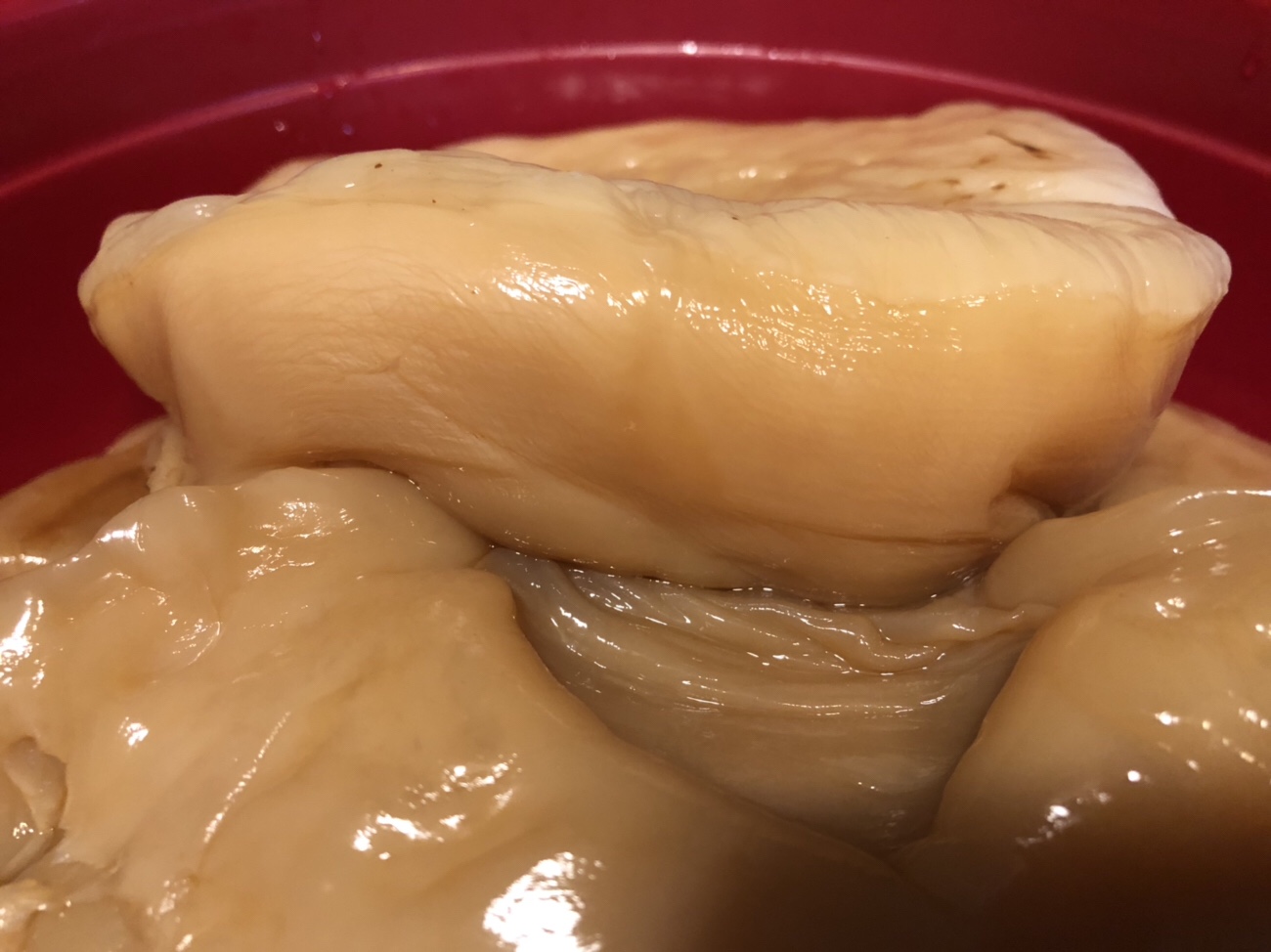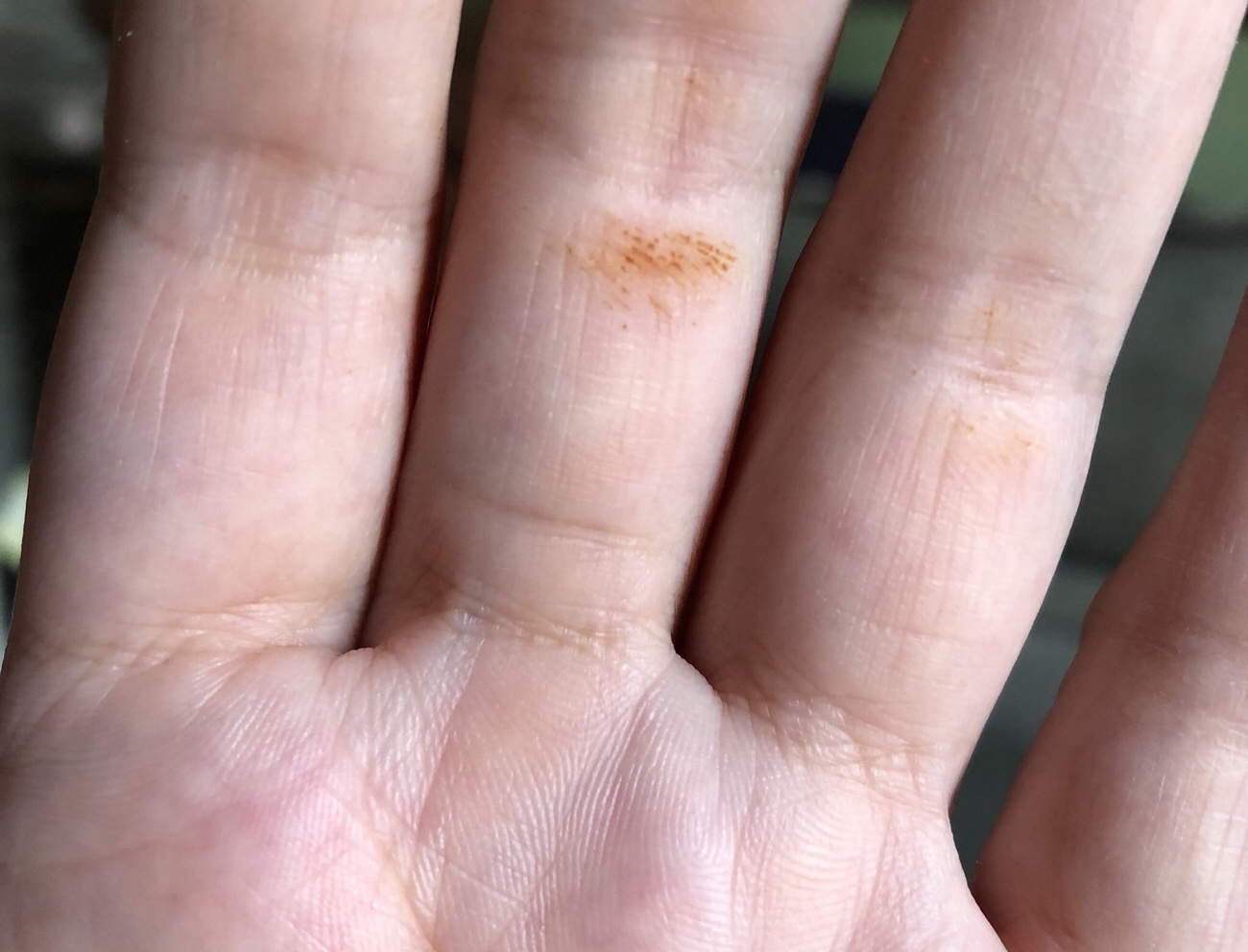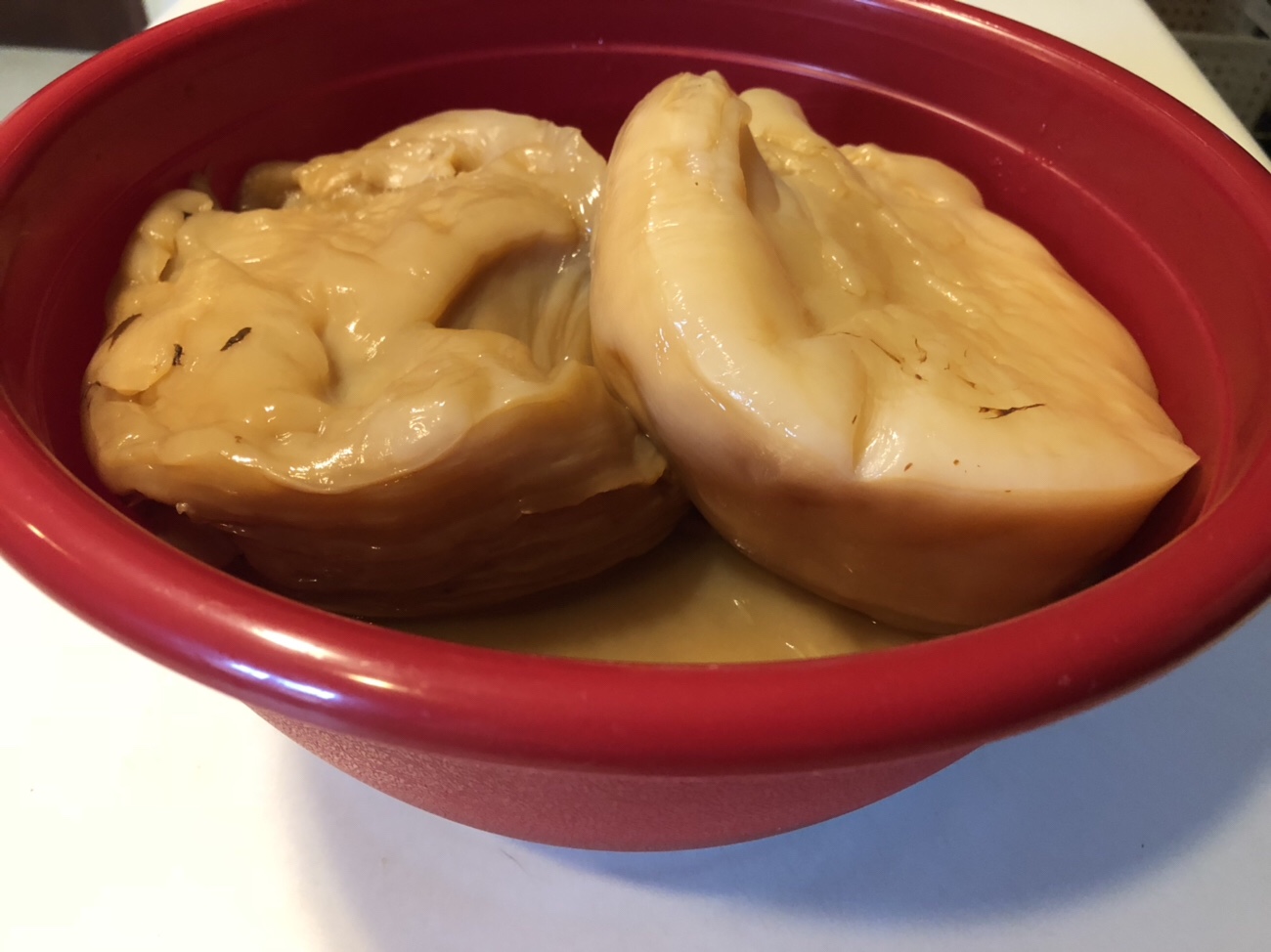
As I shared in an earlier post, I constantly have vinegar-in-progress working away in jars and crocks. Periodically, I harvest the kombucha vinegar and do a SCOBY “clean out” to make room for new pellicle growth…and never fail to be amazed at the size these SCOBYs attain!
They start as thin, unassuming starters that I transplant from my active kombucha jars to the vinegar-making vessels (right now, a 2 gallon water crock and a 1 gallon repurposed pickle jar). With time and sweet tea top-ups, they grow into incredibly thick mats that take up much of the space in the jars. When that happens, it’s time to harvest.
The vinegar that’s left at the bottom of the vessels is super yeasty and dark – perfect starter for kombucha wine! I save this high yeast vinegar for that specific purpose, but it can be used just like (regular) kombucha vinegar. If the yeast strings are concerning, straining through a plastic mesh sieve should remove most of them.
I noticed that handling these big SCOBYs left orange-y stains on my fingers, like I’d been handling goldenrod. It’s been a couple of days since I fished them out of the vinegar murk, and those stains have real staying power: they don’t seem to have faded at all.


These SCOBYs are headed outside to become enrichment (and a source of probiotics) for the fowl. They’ll tear these rubbery discs up like they’re made of tissue paper, and have fun doing it. The ducks will try to soak them in their pools to soften them up, so we’ll find sunken SCOBYs when we dump the pools at night. Sometimes, the fowl will scatter them around and you really have to use care not to step on one or you can take a spill – they’re very slippery!
In a few months, I’ll repeat the process and pull out gargantuan SCOBYs, ready for the fowl (or if I’m so inclined, to be turned into gummy candies). Until then, new SCOBYs will be forming in their vessels, turning sweet tea into incredibly useful – and tasty – vinegar.

